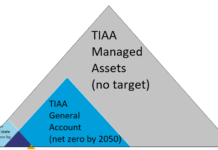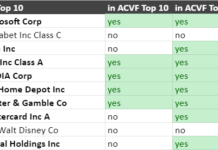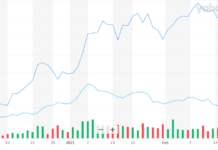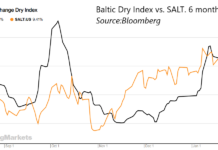Nassim Nicholas Taleb’s The Black Swan: The Impact of the Highly Improbable
Human Biases
Recently, I’ve been writing that I expect a good sized market decline, and that I’ve been hedging my market exposure in response. The Black Swan, however, is not so much about what we expect, but what we don’t. To massively oversimplify one of Taleb’s major points, we (humans) tend to place too much weight on likely and easily imagined events, and not nearly enough weight on unlikely, difficult to imagine events.
In market terms, this should mean that we overvalue insurance against relatively likely, easy to envision events, and undervalue insurance against very unlikely, difficult to envision events. Readers who have not already read the book can get some ideas of why we make these errors by reading the reviews referenced above, but you’ll get a lot more out of it if you read the book itself.
For stocks and market indexes, it’s generally more likely that the price will not change much than that it will change a lot. In general, it’s also easier to imagine a stock or market index returning to a value that it has reached recently or is at currently than rise or fall rapidly to something else.
In terms of financial options (which can be considered insurance against a stock’s rise (calls) or fall (puts), this implies that options with strike prices near the current price or recent prices are likely to be over-priced, and options with strike prices that are quite far from the current or recent prices are likely to be under-priced.
That means that investors who are aware of this bias (which is unlikely to go away, because it is an artifact of human psychology) should prefer to sell options with strike prices near current or recent prices ("near the money") and buy options with strike prices that are far from recent or current values (far out of the money.)
Hedging
I generally prefer to use options to hedge my positions because I find the margin requirements are less onerous. Historically, I’ve reduced my exposure to the market by selling calls on index ETFs such as SPY, IWM and QQQQ. For more detail, I wrote a longer post on five ways to hedge, and why I prefer selling calls.
After reading the Black Swan, I’ve modified this slightly. Now I
- Sell calls that are just slightly in the money (according to the rationale above, these should be priced slightly too high, because they are insurance against likely events)
- Buy an equal number of far out-of the money calls with the same duration at a considerably higher strike price.
This combination is known as a "call spread." The calls I sell are much more valuable than the ones I buy, so this spread still loses value when the market rises, and gains value when the market falls. The moves are not quite as large as they would be for just short calls, so I take slightly larger positions to achieve the same size hedge.
The advantage of hedging with this sort of spread is what happens when things go wrong. The call spread can only produce finite losses when prices rise, while a short call can produce theoretically infinite losses. Furthermore, the long out-of the money call position is likely to be underpriced (according to the theory above), which means that it should be an effective use of funds to buy this sort of protection.
The one problem with both short calls and short call spreads as hedging strategies is that they become less effective as the index falls. If only a small correction is expected, this can actually be an advantage, because as the market falls, the portfolio’s beta will naturally increase.
If the market falls and a hedge is still desired, the downside protection can be enhanced by buying back the short call part of the spread, and selling a new batch of short calls at a strike price closer to the index’s new value.
In Short
In other words, the main change in my hedging strategy in response to The Black Swan was the purchase of far out-of-the money calls on the same index I was using to hedge. This does not have to be done as part of a short call spread; the same advantage arising from the under pricing of far out-of-the-money options can be exploited on its own, or as part of a short-based hedging strategy.
So far, my change in strategy has served me well, since the market has been going up when I expected it to head down.
DISCLOSURE: Tom Konrad and/or his clients have short positions in SPY, IWM, and QQQQ.
DISCLAIMER: The information and trades provided here and in the comments are for informational purposes only and are not a solicitation to buy or sell any of these securities. Investing involves substantial risk and you should evaluate your own risk levels before you make any investment. Past results are not an indication of future performance. Please take the time to read the full disclaimer here.









Tom- I also loved Taleb’s concepts, though I preferred his first book (Fooled by Randomness). I will try your “call spread” strategy with my portfolio. thanks for the suggestion.
I still have not read Fooled by randomness (but you’ve moved it up on my list)… clearly I spend too much time reading blogs.
Book Review: ‘Investment Opportunities for a Low Carbon World’ – Chapters 1, 2
Charles Morand ( AltEnergyStocks ) submits: Tom and I recently received complimentary copies of a new